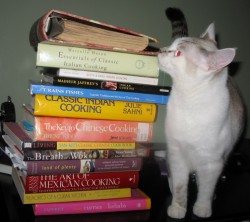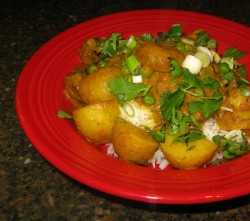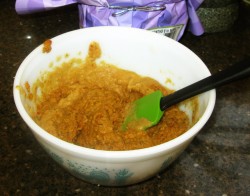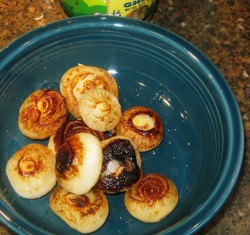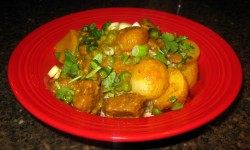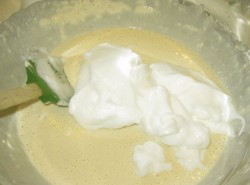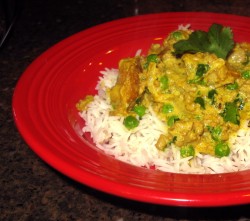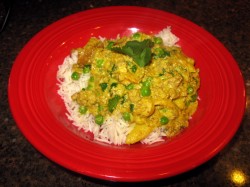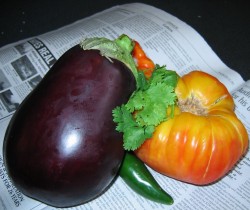Weekend Book Blogging: Paperback Swap
I just found this website, which I am sure lots of you already know about, but hey, I didn’t, so I am going to share. There have to be plenty of other unaware folks out on the Internet besides myself.
Anyway, it is an online book swap. What you do is register on the site, post ten books of your own you are willing to mail to other registered users of the site at your own expense. (Via media mail, which is the cheapest rate–about $2.00 per book, unless it is a hardcover), and for each book you send out that the person who requested it receives, you get a book credit. You also get two starting credits just for posting your ten books, which you can use on any of the books currently posted on the site.
You can also make your own wish lists–which means if a book you want is posted, you get a message notifying you of it and you have 48 hours to request the book from the person who posted it.
When you get a book request from another member, you can decline the request or accept it. If you accept, you have 48 hours to mail out the book and mark it as mailed. When the person who requested the book receives the book, they mark it as such, and then you get your credit.
It is a pretty neat system. I have loaded 23 of my books, and already have one to send out and lots more that are on people’s wish lists. It seems like a lively community of people all sharing books back and forth, and I thought that maybe some of my book-loving readers might want to know about it.
BTW–there are all sorts of books there, including food-related titles and cookbooks. In fact, I just uploaded a few of my own, including titles by MFK Fisher.
Anyway, if you are interested, take a look at Paperback Swap.
Onions Added Twice Curry: Lamb Dopiaza
From what I understand, “dopiaza” is a Persian word that means either “two onions” or “twice onions.” In some dopiaza recipes, it is obvious that the name refers to using twice as many onions as possible. In others, it is apparent, that it means onions are added in two different stages.
In mine, it means that two different kinds of onions are used, in copious amounts, added at two different points in the cooking process.
I like dopiaza curries, which are said to have originated in the court of Mogul emperor Akbar the Great, or in the kitchens of the Nawabs–provincial governors of the Muslim Mogul Empire in North India. Some say it originated in Hyderabad, but I have also seen Bengali and Punjabi versions, so I cannot say for certain where this style of cooking meats came about.
I just know that it tastes really, really amazingly rich, and results in very tender meat and a rich sauce.
And yes, although it is primarily a meat-oriented curry, dopiaza can be made vegetarian in style, by using boiled eggs or paneer as the protein element, or by using potatoes, onions and peas without any protein at all. (It wouldn’t be traditional at all, but pan-fried tofu cooked in a dopiaza sauce would taste divine.)
Chicken, rabbit, beef or venison could all be cooked in this way, for delicious results, but what I had was fresh local lamb, so lamb is what we ate!
My version of dopiaza includes a browned onion sauce, made by deeply browning a large quantity of thinly sliced onions, then grinding them into a paste with fresh ginger and garlic, chilies, and whole spices. This fragrant, steaming warm paste is then added back to the pot with the meat as it browns, then yogurt and water is added and the curry is cooked until the meat is halfway tender. Then, halved new potatoes are added while the curry simmers, as well as my second dose of onions–caramelized whole baby onions–my version uses onions both as the main ingredient in the sauce, and as a vegetable.
Then, the sauce is allowed to reduce a bit before a second amount of yogurt along with a squeeze of lemon juice is added to finish the curry.
To garnish the dopiaza I stir in roughly chopped cilantro leaves and I sprinkle the surface with a third shot of onion flavor–thinly sliced scallion tops.
Before I give you the recipe, let’s talk a bit about the whole baby onions.
The type I used, which are flattened and shaped rather like fat disks, are called in Italian, cipollini. They are lovely little onions, with thin, pale yellow to pale golden brown papery skins, and a sweet, crisp character that turns meltingly rich when caramelized, and they are increasingly visible in American markets. They are also easily caramelized whole in a pan, because they are flat on the top and bottom–there is no chasing them around the pan with a spoon or spatula. You put them in the pan on their heads or bottoms, let them brown on that side, slip a spatula under them, flip them once, and they brown on the other side! No skittering about like playful kittens in the ghee! They do just as you tell them to.
But, the truth is, if you cannot find cipollini, plain old tiny pearl onions will do. They are tiny round onions, with either white, pale gold or yellow skins or even thin red skins, though white is the most common. They are not quite as sweet as cipollini, but once they are caramelized then braised in the curry sauce, no one is going to complain about how they taste at all–they will taste amazing. But, you are going to have to be a little patient with these little round rascals as they roll hither and yon in the pan dodging your spoon as you try to keep them browning evenly.
To peel either sort of tiny onions, cut off the tops and roots in thin slices, then carefully peel off the skins with your knife and fingers, leaving the onions essentially whole.
I used ghee to brown the little onions because it gives a superior flavor to the dish, but if you are worried by saturated fat, canola oil works well, too, though the resulting flavor is not quite so rich.
Dopiaza like many other curries, only improves with flavor as it is kept in the refrigerator overnight, so if you want, you can make it several days ahead of time and reheat it just before service. This is one of the ways you can put on a large Indian feast without making a hash of your nerves the day of your dinner party–make all of the curries in the days ahead and just reheat them on the night you have your guests over. That way, you can take up your time the day of the feast with making appetizers, rice, and fresh breads for your guests.
Lamb Dopiaza
Ingredients:
3 tablespoons ghee or canola oil
10-15 cipollini onions, peeled but left whole, or 1 cup pearl onions, peeled but left whole
3 tablespoons ghee or canola oil
4 cups thinly sliced yellow or red onions
1 1/2 teaspoons salt
8 cloves fresh garlic, peeled and sliced
2″ cube fresh ginger, peeled and sliced
1-4 fresh thai chilies–depending on how hot you want it
1 tablespoon cumin
1 tablespoon coriander
1 pod black cardamom
6 pods green cardamom
5 cloves
1/2 teaspoon black peppercorns
1/2″ stick cinnamon, or 1/2 teaspoon ground cinnamon
1 teaspoon sweet paprika
1/2 teaspoon ground turmeric
1 1/2 pounds lamb leg and shoulder meat, cut into 1″ cubes
1 cup Greek or strained regular yogurt
1/2 cup-2 cups water (how much water you use depends on whether you are using a pressure cooker or regular pot)
1 1/2 pounds new potatoes, well scrubbed and cut in halves or quarters, depending on how big they are
1 1/2 cup Greek yogurt or regular yogurt, strained
juice of 1 small lemon (about 1 1/2 teaspoons
salt to taste
1 cup roughly chopped cilantro leaves
3/4 cup thinly sliced scallion tops (dark green part only)
Method:
Heat first measure of ghee in a heavy-bottomed pan or pot over medium high heat. Add the peeled whole small onions, and cook, stirring as needed until they browned all over the outside, or in the case of cipollini, are browned deeply on the top and bottom and are browned lightly on the sides. When done, remove from the pan and set aside to be added to the curry later.
In the same pan, heat the second amount of ghee or oil and add the four cups of thinly sliced onions. Sprinkle with the salt and cook, stirring, until they turn deep reddish brown. Remove from the pan, leaving behind as much oil or ghee as possible, and set the pan aside and put the onions into a grinder or blender with the garlic, ginger, chilies and spices–even the ground up ones–and grind to a fine paste. It should look like the reddish brown, steaming paste in the photograph in the post above. If you use a blender, add a little bit of water to get the paste to smooth out–and if you use a blender, you will likely have to grind the spices beforehand in a mortar and pestle or a coffee grinder.
Return the pan to the heat and add the lamb cubes. Brown until most of the pink is gone, then add the onion paste mixture back to the pan, and cook, stirring, until the meat is fully browned and the sauce is fragrant. Add the yogurt, and if you are using a pressure cooker, 1/2 cup of water and scrape all the browned bits sticking to the pan up and dissolve them into the liquid. If you use a pressure cooker, scrape the contents of the pan into the cooker, and put over high heat, bring to a boil, lock down the lid and bring to full pressure. Turn the heat down to low, and cook on full pressure for fifteen minutes.
If using a regular pot, add the full measure of water–two cups–and the yogurt and deglaze the pot as directed above. Bring to a boil, turn down heat, cover pot and simmer until the lamb is just fork tender–about forty-five minutes.
After lamb is cooked, in pressure cooker–quick release pressure, open pot and add the potatoes and little whole browned onions. Bring to full boil again, lock the lid down and bring to full pressure. Turn the heat down to low and cook for seven minutes, and then let the pot sit off heat for two minutes, then release pressure and remove lid. If the sauce is watery, simmer for a few minutes to reduce it.
If using a regular pot, add potatoes and onions after the meat is mostly tender, and cook until the meat is fully tender, and the potatoes and onions are perfectly fork tender. Remove lid halfway through the potatoes cooking, to help reduce the excess water from the sauce–and reduce until the sauce is thick enough to coat a spoon once the curry is cooked.
Add the yogurt to the thicker sauce, and stir well. Just before serving add the salt to taste and the lemon juice.
Stir in the cilantro, and serve over basmati rice, with a liberal sprinkling of scallion tops as a garnish.
Note: If you cook chicken or rabbit this way, don’t use the black cardamom and instead, add a 1/4 teaspoon fennel seed to the spice mixture.
Evil Genius Food Porn: Bacon-Filled Waffles With Chili-Fried Apples
This dish is so good, yet so bad for you.
There really ought to be a law against this kind of cooking.
In fact, I reckon that there used to be a law against such things, back in the day when churchmen were so worried about the status of everyone’s mortal souls that laws were made against sins such as gluttony. And if there is ever a recipe to incite gluttony, it is this one.
And here I am writing about it during Lent. I’m a very bad woman, a temptress, a sinner in the hands of a wicked kitchen muse. This is what comes of being a godless heathen, I guess. I have fallen, and I doubt I will ever, ever get up, because I don’t feel the least bit guilty about making up this recipe.
Because, shoot, sometimes, you just have to eat something that is completely indulgent and delicious, even if it isn’t very good for you. For most folks, that means dessert: chocolate truffles, cheesecake, pie or chocolate cream-cheese brownies.
As you can tell, I can throw down and make all of those aforementioned decadent desserts, but I prefer to make savory dishes that engage the senses and beguile the palate. It’s just how I am–in culinary school, I was one of those trainees who preferred cooking to baking, though I could do either very well. As wonderful as baking can be, it requires a different skill set and a different creativity than cooking does–and I am one of those folks who think that truly wonderful pastry chefs and bakers are a breed apart from the rest of us.
I also tend to prefer eating savory dishes to sweet ones, though I am not certain why that is. That is not to say I don’t like all the cookies, cheesecakes, brownies, truffles and other wickedly tasty desserts I make, but I don’t really crave them very often. Certainly not anymore–as I have gotten older and I have started to lose weight, I have found that the foods I crave and eat as indulgences has changed. I am more enamored of cheeses, especially the blue mold cheeses that I was denied most of my life, than I am of ice cream.
And bacon. I can always eat bacon. And as a hillbilly born and raised, I think that nearly anything can be improved if you add bacon to it. I mean, fried rice is better with bacon.
And chicken and bok choy are elevated into the realm of amazing when bacon comes into the picture. And hey, the Chinese agree with me–tofu with bacon bloody well rules.
So, why not bacon baked into waffles? I mean, you eat bacon -with- waffles, right? So, why not put it inside the waffles, and then top the whole thing with apples cooked in bacon fat, brown sugar, cinnamon and chilies.
That way, it is sweet, salty, bready, spicy and just plain old all-around good. It is hillbilly food raised up into art.
And how can that be bad?
(Which of course makes me wonder that if I open a restaurant whether I should open a pan-Asian fine dining establishment or a haute-hillbilly food emporium. I am sort of stuck in the middle of the question with no answer.)
Of course, saturated fat is saturated fat, whether it comes from cocoa butter or bacon, and neither is particularly great for one’s health,but at least I am avoiding the sugar. Sort of, mostly. Except for the sugar cooked into the apples, and the sugar in the waffles and the maple syrup drizzled on top.
Ah, hell, I guess that these waffles are probably just as unholy as a chunk of my cheesecake would be.
I guess you could say that it has no redeeming feature except that it tastes great and would make a knock-your-socks off brunch for omnivores who didn’t mind the fat from the bacon that inhabits both the waffles and the apples. I don’t intend this to be eaten every day, or even every week, or even once a month. How about once every six months?
And in between–eat lots of salads and stir-fried greens to make up for the indulgence of this one brunch dish.
Now, let’s talk about the specifics of the waffle recipe. I originally got it from Fine Cooking, and have modified it a little bit. I switched butter for the oil, but the truth is, in this version, I switched back to canola oil. You can use melted butter if you want, but the flavor of it is overpowered by the bacon added to the batter as it is being cooked. So, just go with the canola or other mild vegetable oil.
The egg whites–you beat them until they come to soft peaks, then add sugar and beat to stiffer peaks and then fold it into the batter just before you scoop it into the waffle iron and bake. Don’t skip this step. The waffles have a much better texture when made this way.
Don’t use powdered buttermilk for these waffles–I did once. It was not a good substitute. Just get some buttermilk and use it. If you have leftover buttermilk, make biscuits. Or scones. Or dumplings. Or ranch dressing. Just don’t do the powdered crap–it really doesn’t taste good in the waffles.
Also–if you don’t want to put the waffles into an oven to crisp up, or if you oven isn’t convection and thus doesn’t seem to be crisping them up–you can use your toaster to crisp them up before serving. It is a sneaky little trick, but it works. Just cut your finished waffle into the four sections delineated by the iron, then put each little waffle into a slot in the toaster and toast on the lowest setting. In one or two passes with the toaster, they crisp right up. Then, you can put them on the oven rack to hold them for service.
One more thing–this recipe is for a regular waffle iron that makes ten or twelve inch square waffles that are then cut into four small waffles, not for a Belgian waffle maker. I have no idea if it will work with a Belgian waffle iron, nor do I know how many waffles it would make in a Belgian waffle iron. So, if you have a different kind of waffle maker, you will have to experiment a bit to see how it all works together.
As for the apples–you can fry them in butter, but since you already have hot bacon grease sitting right there, why not use that? It isn’t like butter is better for you, and the smokey pork flavor goes beautifully with the apples. Besides, West Virginia grandmas have been frying the apples like that for years, and so there is the weight of tradition behind it–traditional and frugality.
And–you can leave out the chilies, but I beg you not to. They are part of what elevates this dish from pretty darned good into sublime. So, I beg you to get some Aleppo pepper flakes–you can get them at Penzey’s or at various Middle Eastern grocery stores–and use them. Once you have them, you will use their sweet-hot tingly savor to make lots of your foods sparkle. Trust me–I love the stuff, and I know that you will find uses for it beyond fried apples.
So here we come to the recipe–the one that inspired Brittney to say to me, “You would make such a great evil genius, especially in the kitchen.”
Bacon-Filled Waffles With Chili-Spiced Fried Apples
Ingredients for the Waffles:
1 1/2 cups all purpose flour
1/2 cup cornstarch
1 teaspoon salt
1 teaspoon baking powder
1/2 teaspoon baking soda
1 teaspoon cinnamon
1 1/2 cups buttermilk
1/2 cup milk
1 teaspoon vanilla extract or vanilla bean paste
12 tablespoons canola oil
2 large eggs separated
2 tablespoons sugar
1/3 cup crumbled cooked bacon (cook until chewy, and then chop finely–if it is too crisp, it will dry out in the waffle iron and not taste as good.)
Canola oil spray
Method:
Heat your oven to 200 degrees F. and plug in your waffle iron and start it heating.
Whisk the dry ingredients together thoroughly except for the sugar and bacon in a large mixing bowl. Set aside.
Whisk together the milks, vanilla, canola oil and egg yolks in a large measuring cup or batter bowl until well combined.
In another bowl, whisk the egg whites until they form soft peaks. Sprinkle the sugar over them and continue whisking until they form fairly stiff peaks.
Blend together the liquid into the dry ingredients until they are just combined. Do not overmix.
Fold in the egg whites.
Spray your waffle iron well with canola oil spray. Fill the iron with scoops of batter without overfilling the iron. Sprinkle with an even layer of bacon bits. Close waffle iron and cook as directed.
When baked, remove from iron, cut into fourths along guidelines and lay in oven on racks in a single layer to crisp up. (You can also crisp them in the toaster as I directed in the post and then hold them in a single layer in the oven. This works a bit better in my opinion.)
Serve topped with fried apples and a bit of maple syrup.
Ingredients for Chili-Fried Apples:
3 1/2 tablespoons bacon drippings or grease, depending on what you want to call them
4 crisp tart apples, peeled, cored and cut into thick slices (see photo for reference)
1/4 cup raw, brown or maple sugar
1 teaspoon cinnamon
1/2 teaspoon Aleppo pepper flakes
Aleppo pepper flakes and maple syrup for serving/garnish
Method:
Heat your bacon drippings or grease over a medium flame in a skillet or frying pan. Add apples in a single layer and cook, stirring, until they soften to where they can be pierced by a fork, but they still are a bit hard in the center and they are golden colored. Sprinkle with sugar, cinnamon and chili flakes, and keep cooking, stirring constantly, until they are fragrant, glazed with a thick syrup and are soft through without being mushy.
Serve spooned over the bacon waffles with a drizzle of maple syrup and if you like another sprinkle of Aleppo pepper flakes.
(These would be good over home-made sour cream vanilla ice cream, especially if you added black walnuts to the mixture.)
Another Everyday Quick Curry: Safaid Keema Mattar
Keema is ground meat–most often it refers to lamb, but it can also mean chicken or beef. I like to make this particular North Indian recipe with lamb, although I am certain it would taste good with ground beef or chicken. Unlike keema sookh, which is ground meat cooked in spices with vegetables without a sauce–safaid keema has a dairy-based creamy pale curry sauce that is primarily made from milk and yogurt. It is really good with lots of rice or bread to soak up the delicious, delicately flavored sauce.
Along with the ground lamb, this curry features tender new potatoes and sweet peas. I use frozen peas in the curry for their convenience, but if you want, you can certainly use fresh baby peas in it–making an Indian variation on creamed new potatoes and peas. If you have mint, use that as a garnish, but if not, the cilantro I used here is quite delicious and adds just the right note of freshness to the curry.
The milk in this recipe can be either whole milk or two percent; I am not sure skim would make a very tasty sauce. The yogurt I used is Greek-style–which is thicker and creamier with a nicer tangy flavor than regular yogurt. It is made with a different strain of lactobacillus, than most American yogurts, so it has, I think, a richer, tangier flavor that I prefer. When you use Greek yogurt, since it is strained, you don’t have to reduce the sauce as much, since the excess liquid is already removed from the yogurt.
You can use either whole milk yogurt or two percent–I used whole milk and prefer it. Also, if you cannot get Greek yogurt, you can strain your regular yogurt overnight in cheesecloth to remove the excess liquid and thus, when you cook with it, you will not have to simmer it as long to reduce it.
This is a quick and simple curry recipe that is ideal for dinner after work–the one thing that takes the longest is parboiling the potatoes. I start them at the same time as I start the rice in the rice cooker, and by the time the curry is ready for the potatoes to be added, the potatoes are ready for the job.
I like this served over rice to soak up the sauce, but Zak likes to dip bread into it–so you can serve it either way, or with both basmati rice and naan, if you like.
Leftovers taste even better when reheated the next day, as is often the case with Indian foods.
Safaid Keema Mattar
Ingredients:
10 fingerling potatoes or other type of new potatoes, scrubbed and quartered
2 tablespoons ghee or canola oil
1 1/2 cups onions, thinly sliced
1 teaspoon salt
5 cloves fresh garlic, sliced
1″ cube fresh ginger, peeled and sliced
2 teaspoons cumin seeds
1 1/2 tablespoons coriander seeds
12 green cardamom pods
4 whole cloves
1/2 teaspoon fennel seeds
1 1/2 teaspoons turmeric
1 or 2 fresh Thai chilies (optional–if you want the curry to be completely mild, leave these out)
1 pound ground lamb
1 1/2 cups whole or 2% milk
10 ounce package frozen peas
2 cups whole or 2% Greek yogurt
salt to taste
1 cup roughly chopped cilantro leaves (or 1/2 cup roughly chopped mint leaves)
1 tablespoon Aleppo pepper flakes for garnish
Method:
Put potatoes into small saucepan, cover with lightly salted water, and bring to a boil. Turn down to a fast simmer, and cook until fork tender–then drain. If you are careful with how fast the simmer goes, you can have the potatoes done in exactly the amount of time it takes to get to where they go into the curry. If not, you can drain them and let them sit in the colander until you need them.
Heat the ghee or oil in a heavy-bottomed, deep skillet. Add onions and sprinkle with salt and cook, stirring, until they are dark golden brown.
While the onions cool, grind together the garlic, ginger and the spices up to and including the turmeric. Grind into a paste.
When the onions are the dark golden brown, add the spice paste mixture and cook, stirring until fragrant–about two minutes.
Add the lamb to the pan, and the milk. Break up the lamb with a wooden spoon, and cook, stirring, until the meat stops being pink. Add the peas, cooked potatoes and the yogurt, and cook, stirring, until the peas are thawed and cooked lightly, and the sauce thickens slightly. Add salt to taste, stir in the cilantro or mint leaves and serve over steamed basmati or in a bowl with naan or chapati on the side.
Sprinkle with Aleppo pepper flakes for a garnish.
Food In The News: Is Organic Cane Sugar a Health Food And Other Burning Questions
Since When Is Cane Sugar A Health Food? Zak sent me a link to an extremely interesting NY Times article where I learned that since consumers have decided that high fructose corn syrup is the devil that has caused rampant obesity in the United States (and yes, it may be -one- factor among -many- involved in the obesity problem–but by no means should anyone believe it is the sole cause), cane sugar is being used as an ingredient in many processed foods, and this fact is being used as a marketing tool.
Which is fine–there are people who want to avoid HFCS, and that is great, so labeling the absence of it and the presence of cane sugar is fine. However, calling cane sugar a “healthy alternative” to HFCS is stretching the truth just a wee bit.
Oh, hell, let’s just say it is patent bull crap. Sugar is still not good for you in large quantities, no matter whether it comes from sugar cane, beets or corn. Cane sugar may be more cleanly metabolized by our bodies, but it is still sugar, and frankly, I don’t think it needs to be in every brand of spaghetti sauce, salad dressing and bread in copious amounts on the grocery store shelf.
Mark Bittman Says: Eat Better Food, Don’t Worry About Organic I like Mark Bittman. Even when I disagree with him, I like him–he just has such a sensible, no-nonsense way of putting his opinions that I respect and enjoy. In his recent article in the NY Times, Eating Food That’s Better For You, Organic Or Not, he points out that he would rather see Americans eating more conventionally or organically grown fruits and vegetables and other whole, minimally processed foods than have them get the idea that an organic Oreo cookie is somehow healthier than a regular Oreo cookie.
And that is a point that I have found over and over in talking with people who are not in my immediate circle of friends. A lot of people in this country have the idea that the USDA Organic label on a package of cookies, crackers or cereal instantly imbues that particular food with immediate healthy to eat status, which is just not true. “Organic” does not necessarily equate with “healthy,” “sustainable,” or “local,” when it comes to food. All it means is that the food is grown without chemical fertilizers and pesticides, that it has not been treated with sewage sludge and that it has been processed with minimal artificial ingredients and chemicals. That’s it.
As Bittman points out, it can be organically grown in China, then shipped to the United States, which is still not very sustainable. And as he quotes author and nutritionist Marion Nestle, “Organic junk food is still junk food.”
So, as he says, let’s all get off our duffs and eat more vegetables and fruits and leave the organic Oreos to themselves.
Will The Food Revolution Be Televised? If you get the reference to the subhead for this bit, you get a cookie, because you win extra points for obscure cultural awareness. Zak, you don’t count, because I know you know what I am talking about.
Once again, we come to a NY Times article, Is a Food Revolution Now In Season? to see that all of those foodie activists and authors I have been reading and writing about for years: Alice Waters, Michael Pollan, Eric Schlosser and Marion Nestle, thrilled to finally have their voices heard by the new presidential administration. So thrilled in fact, that they are pushing their agenda for a better, healthier food system for the United States, that they are heading to Washington, writing letters, meeting with Tom Vilsack, our new Secretary of Agriculture, and First Lady Michelle Obama, armed with copies of the film, Food, Inc.
Of course, the change these activists want will not come as fast as they want, but it appears that even among farm-state Senators, copies of Michael Pollan’s The Omnivore’s Dilemma are being seen tucked in briefcases and under arms.
That leads me to think that change is coming–faster than I expected, but still slowly.
And that is fine–as any ecologist or gardener will tell you, slow, steady change is the way natural systems work.
Fast change is what is likely to be unsustainable and not stick. Slow change is the way to work toward long-term goals.
Powered by WordPress. Graphics by Zak Kramer.
Design update by Daniel Trout.
Entries and comments feeds.

